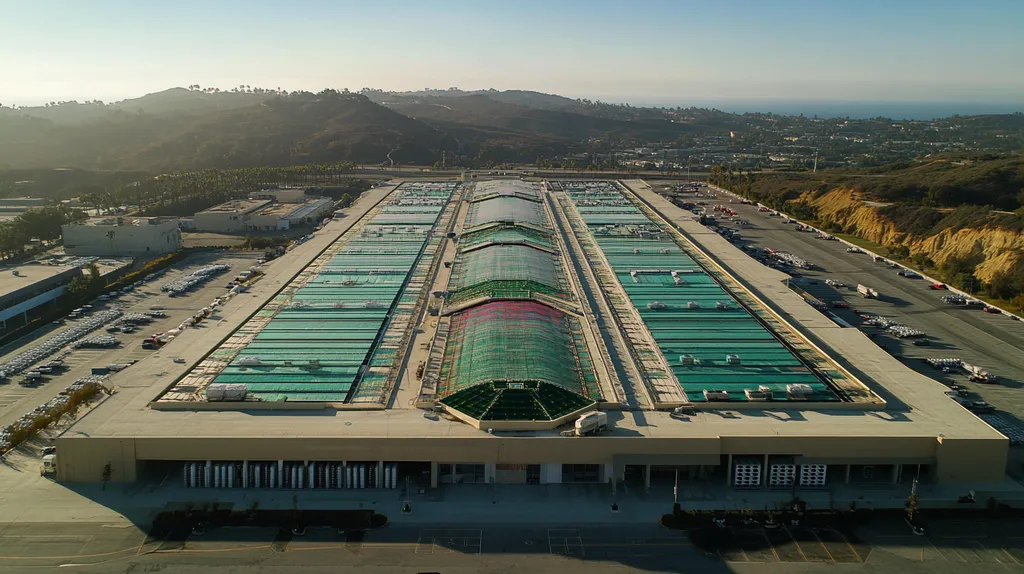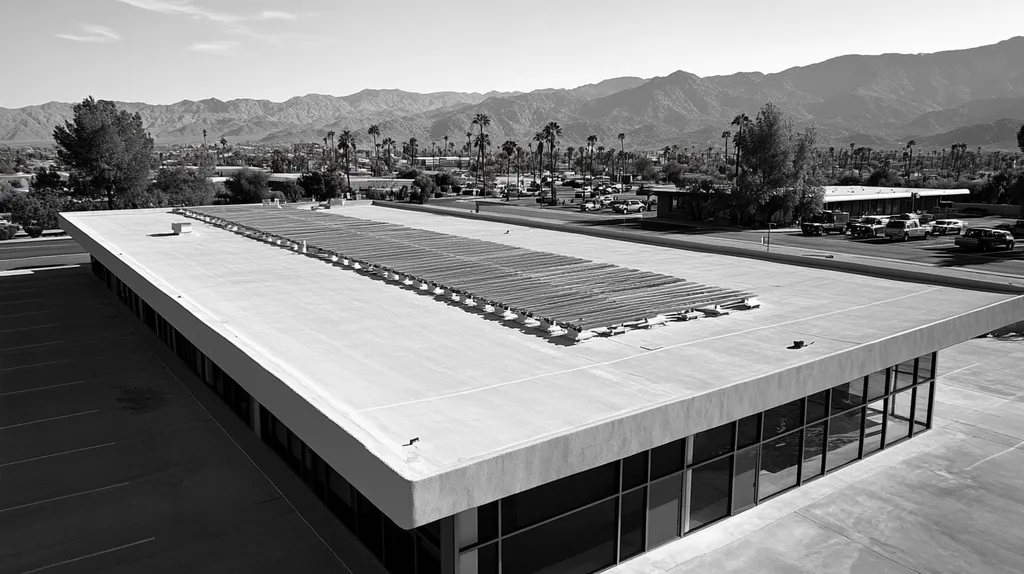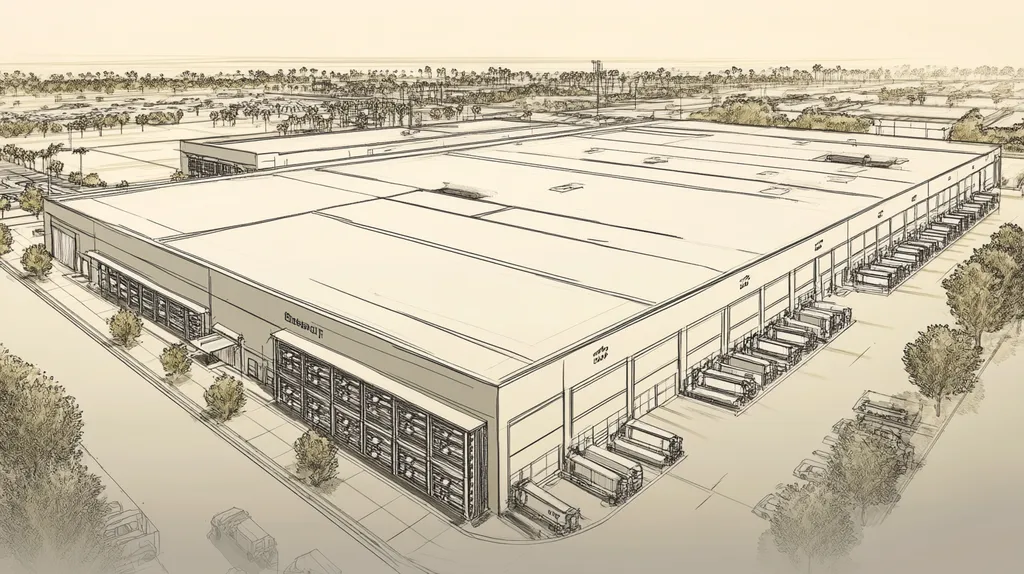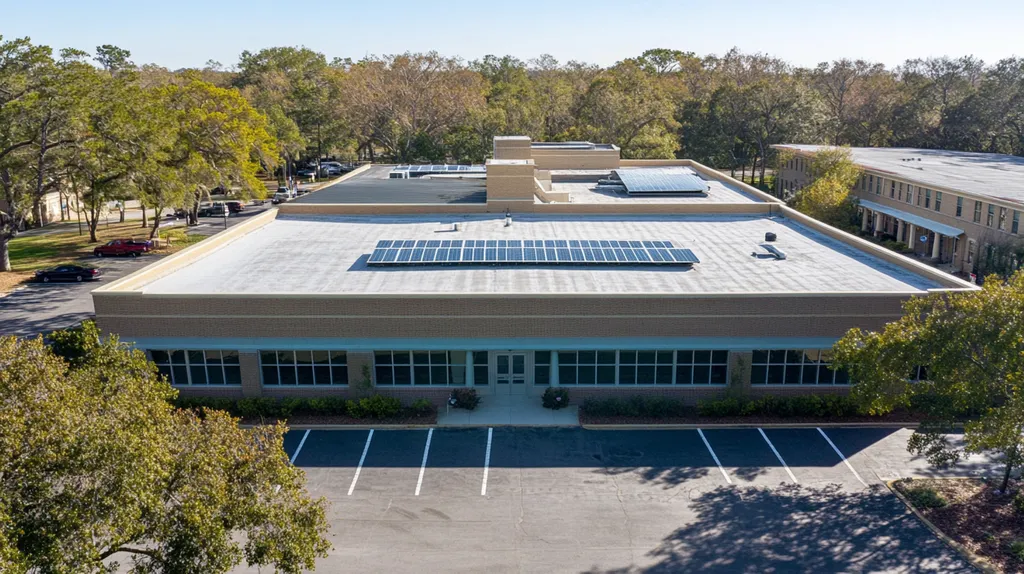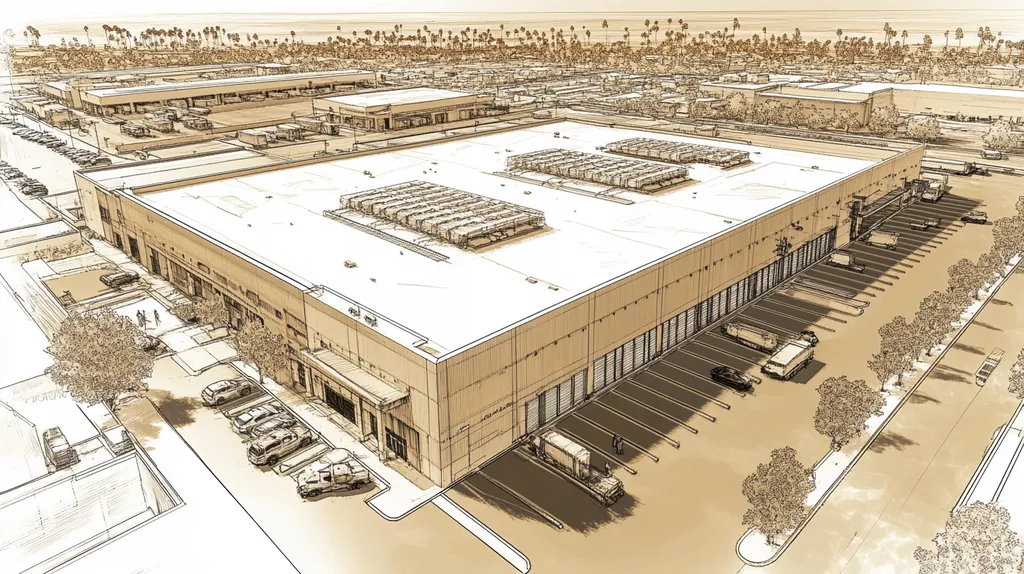Welcome to today’s Battle Royale featuring two roofing heavyweights: “Roof Drainage Systems” in the east corner versus “Internal Gutters” in the west!
Tonight’s showdown pits these contenders against each other across six punishing rounds designed to test every aspect of their performance for Proper Drainage on a Commercial Roof.
At stake? Millions in potential costs, decades of building protection, and the critical performance demands of modern commercial and industrial facilities.
Our professional judging panel will evaluate each round on technical merit, real-world performance, and value delivery. After all six rounds, we’ll declare our ultimate champion.
Ladies and gentlemen, facility managers and building owners… it’s time to rumble!
ROUND 1: INITIAL COSTS & INSTALLATION
When it comes to commercial roofing, drainage system selection can make or break your building’s integrity. Poor drainage choices account for nearly 40% of all commercial roof failures, leading to structural damage, business interruptions, and expensive repairs. Property owners and facility managers must carefully weigh the initial investment against long-term performance when choosing between roof drainage systems and internal gutters.
Material Expenses
Modern roof drainage systems utilize premium materials designed specifically for commercial applications, including heavy-gauge metals and specialized coating systems. While these materials command higher upfront costs, they deliver superior durability and corrosion resistance.
Internal gutters typically incorporate standard-grade materials that cost 30-40% less initially. However, these materials often require more frequent replacement and may not stand up to extreme weather conditions or heavy water flow.
The superior longevity and performance of roof drainage system materials, despite higher initial costs, provides clear value over time. For material quality and durability, roof drainage systems gain the ADVANTAGE.
Installation Complexity
Professional installation of roof drainage systems requires precise calculations, proper pitch planning, and careful integration with the building envelope. This complexity demands skilled labor and may extend installation timelines.
Internal gutter installation appears simpler on the surface, with more standardized procedures and fewer specialized requirements. However, this simplicity can mask critical design considerations that affect long-term performance.
Though more involved initially, the thorough installation process for roof drainage systems helps prevent future problems. This attention to detail gives roof drainage systems the ADVANTAGE.
Project Timeline
A typical roof drainage system installation requires careful planning and methodical execution. While this extends the project timeline, it ensures proper integration with other roofing components.
Internal gutter installations can often be completed more quickly, reducing disruption to building operations. The streamlined process makes internal gutters attractive for time-sensitive projects.
Both systems offer distinct timeline advantages depending on project scope and scheduling requirements, resulting in a TIE for this category.
ROUND 1 WINNER: ROOF DRAINAGE SYSTEMS
ROUND 2: DURABILITY & LIFESPAN
In commercial roofing, the durability and lifespan of drainage systems directly impact building protection and operational costs. Poor drainage choices lead to accelerated deterioration, creating expensive repair cycles that can drain maintenance budgets. Modern drainage solutions offer dramatic performance differences that facility managers must understand to make informed decisions.
System Performance
Modern roof drainage systems employ advanced engineering to maximize water removal efficiency. Siphonic systems can achieve 100 times the drainage speed of traditional gravity systems, making them ideal for larger commercial roofs exceeding 150 square meters. (source: Waterproof Magazine)
These systems maintain consistent performance even during heavy rainfall events, preventing water accumulation that could compromise roof integrity. Their design also allows for flat collector pipe installation, creating more usable space within the building envelope.
With superior water removal capabilities and space-efficient design, roof drainage systems demonstrate clear performance advantages over traditional options.
Material Resilience
Roof drainage components utilize industrial-grade materials specifically engineered for extreme weather exposure. These materials resist UV degradation, temperature fluctuations, and chemical exposure that commonly affect roofing systems.
The heavy-duty construction prevents common issues like warping, cracking, or separation that plague less robust solutions. This material quality translates directly into reduced maintenance requirements and extended system longevity.
The superior material selection gives roof drainage systems a significant ADVANTAGE in this category.
Maintenance Requirements
Professional roof drainage systems incorporate self-cleaning features and debris shields that minimize maintenance needs. Their design promotes continuous flow while reducing the risk of blockages that could compromise drainage efficiency.
Internal gutters require more frequent cleaning and inspection to prevent clogs and overflow issues. Their enclosed design makes maintenance more challenging and time-consuming, increasing the risk of overlooked problems.
With lower maintenance demands and better accessibility, roof drainage systems gain another clear ADVANTAGE.
ROUND 2 WINNER: Roof Drainage Systems
ROUND 3: PERFORMANCE FACTORS
When severe weather strikes, your commercial roof’s drainage system becomes the critical line of defense against catastrophic water damage. Poor drainage solutions can lead to structural deterioration, inventory losses, and business interruptions that cost companies millions annually. Modern drainage technology offers dramatic differences in water removal capability, maintenance needs, and design flexibility that directly impact building protection.
Water Removal Capacity
Modern roof drainage systems utilize advanced engineering to maximize water evacuation efficiency. Siphonic systems can achieve 100 times the drainage speed of traditional gravity systems, making them ideal for larger commercial roofs exceeding 150 square meters. Their design also allows for flat collector pipe installation, creating more usable space within the building envelope. (source: Waterproof Magazine)
Internal gutters rely on traditional gravity flow, which can become overwhelmed during heavy rainfall events. Their limited capacity often results in backup and overflow issues, particularly on larger roof areas.
With superior water removal capabilities and innovative pressure-driven design, roof drainage systems demonstrate clear performance advantages over traditional options, earning them the ADVANTAGE.
Flow Management
Engineered roof drainage systems incorporate strategic placement of drains and careful sizing of components to handle peak water loads. Their design accounts for factors like roof geometry, local rainfall intensity, and building height to ensure consistent performance.
Internal gutters often struggle with uneven water distribution and flow bottlenecks. Their fixed dimensions and standardized designs may not adequately address unique building characteristics or changing weather patterns.
The superior flow management capabilities of roof drainage systems provide more reliable performance across diverse conditions, giving them the ADVANTAGE.
Weather Resilience
Professional roof drainage systems feature robust components designed to withstand extreme weather conditions. Their integrated design helps prevent common issues like ice damming and wind-driven water intrusion.
Internal gutters are more susceptible to weather-related complications. Their enclosed nature can trap ice and debris, leading to backup issues and potential structural damage during severe weather events.
The enhanced weather resistance of roof drainage systems makes them a more dependable choice, earning another clear ADVANTAGE.
ROUND 3 WINNER: Roof Drainage Systems
ROUND 4: MAINTENANCE REQUIREMENTS
In commercial roofing, maintenance oversight can transform a reliable drainage system into a costly liability. Each year, inadequate drainage maintenance leads to over $3.7 billion in commercial property damage across North America. Understanding the maintenance demands of different drainage solutions is crucial for protecting your building investment and avoiding catastrophic failures.
Inspection Requirements
Roof drainage systems feature accessible components that simplify regular inspections. Technicians can easily examine drains, pipes, and connection points without specialized equipment or complex procedures.
Each drainage point includes a specialized baffle system that prevents air infiltration while maximizing water flow capacity. A single inch of standing water adds 2,000 pounds of weight to a 20-square-foot roof area, making efficient drainage critical for structural integrity. (source: Waterproof Magazine)
The straightforward inspection process and visible components of roof drainage systems earn them a clear ADVANTAGE in this category.
Cleaning Procedures
Modern roof drainage systems incorporate debris shields and self-cleaning features that minimize maintenance demands. Their open design allows for quick removal of accumulated materials and thorough cleaning of all components.
Internal gutters present significant cleaning challenges due to their enclosed nature. Accessing these systems often requires invasive procedures that can disrupt building operations and increase maintenance costs.
The superior accessibility and efficient cleaning features give roof drainage systems the ADVANTAGE.
Long-term Maintenance Costs
Roof drainage systems typically require minimal ongoing investment beyond routine inspections. Their durable components and accessible design reduce the likelihood of expensive emergency repairs.
Internal gutters often generate higher long-term costs due to their complex maintenance requirements. Hidden damage can develop undetected, leading to extensive repairs that impact both the drainage system and surrounding structure.
The lower lifetime maintenance costs of roof drainage systems provide another clear ADVANTAGE.
ROUND 4 WINNER: Roof Drainage Systems
ROUND 5: SUSTAINABILITY CREDENTIALS
Environmental sustainability has become a critical factor in commercial roofing decisions, with drainage systems playing a vital role in green building practices. Poor drainage choices can increase energy consumption, contribute to urban heat islands, and accelerate material degradation. Today’s facility managers must evaluate drainage options not just for performance, but for their total environmental impact across the building’s lifecycle.
Environmental Impact
Modern roof drainage systems utilize advanced materials and designs that actively manage stormwater runoff. These systems can significantly reduce the burden on municipal infrastructure while supporting local water conservation efforts.
They incorporate features like flow regulators and retention capabilities that help prevent flooding during peak rainfall events. Many systems also include filtration components that remove pollutants before water enters the watershed.
Internal gutters offer limited environmental benefits, often concentrating water flow in ways that can overwhelm local drainage systems. Their design can also trap pollutants and debris that eventually contaminate runoff water.
With superior water management capabilities and environmental protection features, roof drainage systems earn the ADVANTAGE.
Energy Efficiency
Roof drainage systems contribute to building energy efficiency through proper moisture management. Their design prevents water pooling that can degrade insulation performance and increase cooling loads.
Advanced drainage configurations can integrate with cool roof systems and solar installations, maximizing renewable energy potential. These systems help maintain consistent roof surface temperatures, reducing heat island effects.
Internal gutters frequently create thermal bridges and moisture retention issues that compromise building envelope performance. Their placement often interferes with insulation continuity, leading to increased energy consumption.
The superior energy performance characteristics of roof drainage systems provide a clear ADVANTAGE.
Recyclability and Future Adaptation
Modern roof drainage systems prioritize sustainable materials that can be easily recycled or repurposed. Their modular design allows for component replacement without full system removal, reducing waste during upgrades or repairs.
These systems can adapt to changing climate conditions and evolving building requirements. Components can be modified or enhanced without compromising the entire drainage network.
Internal gutters typically contain mixed materials that complicate recycling efforts. Their integrated construction often requires complete removal during modifications, generating substantial waste.
The superior sustainability and adaptability of roof drainage systems earn another ADVANTAGE.
ROUND 5 WINNER: Roof Drainage Systems
ROUND 6: SPECIALIZED APPLICATIONS
In specialized commercial roofing applications, drainage system selection can mean the difference between robust protection and catastrophic failure. Complex architectural designs, unique environmental challenges, and specific industry requirements demand drainage solutions that can adapt while maintaining peak performance. Poor drainage choices in specialized applications lead to 65% higher maintenance costs and shortened roof lifespans.
Material Selection
Specialized commercial applications demand drainage materials that can withstand extreme conditions while meeting specific industry requirements. Roof drainage systems utilize heavy-duty materials engineered for superior chemical resistance, UV stability, and thermal performance.
These systems employ gravity drainage for roofs under 150 square meters and siphonic systems for larger areas, achieving up to 100 times faster water removal than traditional methods. Advanced copper and stainless steel components provide exceptional durability in harsh environments. (source: Waterproof Magazine)
Internal gutters typically rely on standard commercial-grade materials that may not meet specialized performance requirements. Their limited material options can compromise long-term reliability in demanding applications.
The superior material engineering and application-specific options give roof drainage systems the ADVANTAGE.
Design Integration
Modern roof drainage systems offer flexible design options that seamlessly integrate with complex architectural features. Their modular components allow for custom configurations that maintain optimal flow while accommodating unique building characteristics.
These systems can be precisely engineered to handle specific flow requirements, unusual roof geometries, and specialized equipment placement. Their adaptable design supports future modifications without compromising system integrity.
Internal gutters present significant integration challenges in specialized applications. Their rigid design constraints often force compromises in building layout or drainage performance.
The superior design flexibility and integration capabilities give roof drainage systems the ADVANTAGE.
Performance Requirements
Specialized applications often demand drainage solutions that exceed standard performance metrics. Roof drainage systems can be engineered to handle extreme water volumes, chemical exposure, and unique environmental challenges.
These systems maintain consistent performance even under severe conditions, protecting sensitive equipment and processes below. Their robust design prevents common issues like overflow and backup that could compromise specialized operations.
Internal gutters struggle to meet enhanced performance requirements in specialized settings. Their limited capacity and standardized design can create vulnerabilities in critical applications.
The superior performance capabilities and reliability give roof drainage systems the ADVANTAGE.
ROUND 6 WINNER: Roof Drainage Systems
AND THE WINNER IS…
After six punishing rounds of technical evaluation, we have our undisputed champion! In a stunning display of dominance, ROOF DRAINAGE SYSTEMS claims victory with a clean sweep across all categories!
This heavyweight champion demonstrated superior performance in every round, from initial installation through long-term sustainability. Its knockout advantages in water removal capacity, maintenance accessibility, and specialized application flexibility proved decisive in securing this historic victory.
But don’t count internal gutters out completely! In specific applications – particularly smaller buildings under 150 square meters with straightforward drainage requirements – internal gutters can still deliver a solid performance at a lower initial cost.
Remember, folks: every building faces unique challenges. Local climate conditions, architectural requirements, and specific property characteristics all influence drainage system selection. While roof drainage systems emerge as our champion, your building’s specific needs may favor a different approach.
Always consult with qualified roofing professionals who can evaluate your particular situation before making this critical decision.
In the high-stakes arena of commercial roofing, choosing the right drainage system isn’t just about winning a single bout – it’s about protecting your investment for the long haul. Step into the ring armed with knowledge, and make your drainage decision a knockout success!
FREQUENTLY ASKED QUESTIONS
Q. What are the costs of commercial roof drainage systems?
A. The costs for drainage systems vary significantly based on materials and complexity. Roof drainage systems often require higher-quality materials that ensure better durability and performance, which results in increased initial investment. However, considering their longer lifespan and reduced maintenance, they can prove to be cost-effective in the long run. Internal gutters tend to have lower upfront costs but may lead to more frequent repairs and replacements.
Q. How do roof drainage systems compare in durability for commercial roofs?
A. Roof drainage systems are designed to withstand extreme weather conditions and offer superior durability compared to standard options. Their industrial-grade materials resist issues like UV exposure and thermal fluctuations, ensuring a longer lifespan. In contrast, internal gutters may suffer from rapid deterioration, leading to increased maintenance and replacement costs, thus making drainage systems a more reliable choice for commercial roofs.
Q. How do performance factors differ between drainage systems?
A. Performance factors, such as water removal capacity and flow management, greatly favor roof drainage systems. These systems utilize advanced designs that enhance water evacuation, especially during heavy rainfall events. Unlike internal gutters, which rely on gravity and may struggle to manage large volumes, these systems can adapt to various roof sizes and conditions, providing better overall performance essential for commercial roofs.
Q. What are the maintenance requirements for commercial roof systems?
A. Maintenance for roof drainage systems is generally less demanding due to their accessible components and self-cleaning features. Regular inspections can be performed easily, ensuring any potential issues are quickly addressed. In contrast, internal gutters often involve more complex maintenance procedures that can disrupt operations, leading to higher long-term costs and potential risks if not managed properly.
Q. How do drainage systems impact sustainability on commercial roofs?
A. Modern roof drainage systems play a crucial role in enhancing sustainability by effectively managing stormwater runoff and reducing energy consumption. Their design helps prevent flooding, conserves local water resources, and minimizes the impact on municipal systems. Internal gutters, however, often contribute to environmental issues by trapping pollutants and increasing energy use, showcasing the superior eco-friendliness of drainage systems.
Q. Are roof drainage systems suitable for specialized commercial applications?
A. Yes, roof drainage systems are particularly well-suited for specialized commercial applications due to their adaptable design and robust performance under varied conditions. They can be tailored to meet specific industry requirements, ensuring optimal operation in challenging environments. In contrast, internal gutters often lack the necessary flexibility, potentially leading to inadequate drainage and increased vulnerabilities.
Q. Can I choose between different drainage systems for my commercial roof?
A. Yes, you can choose from various drainage systems tailored to your commercial roof’s specific needs. Factors such as roof size, local climate, and building design will influence your decision. Consulting with a roofing professional can help you evaluate options, including roof drainage systems and internal gutters, ensuring you select the right solution for optimal performance and longevity.


